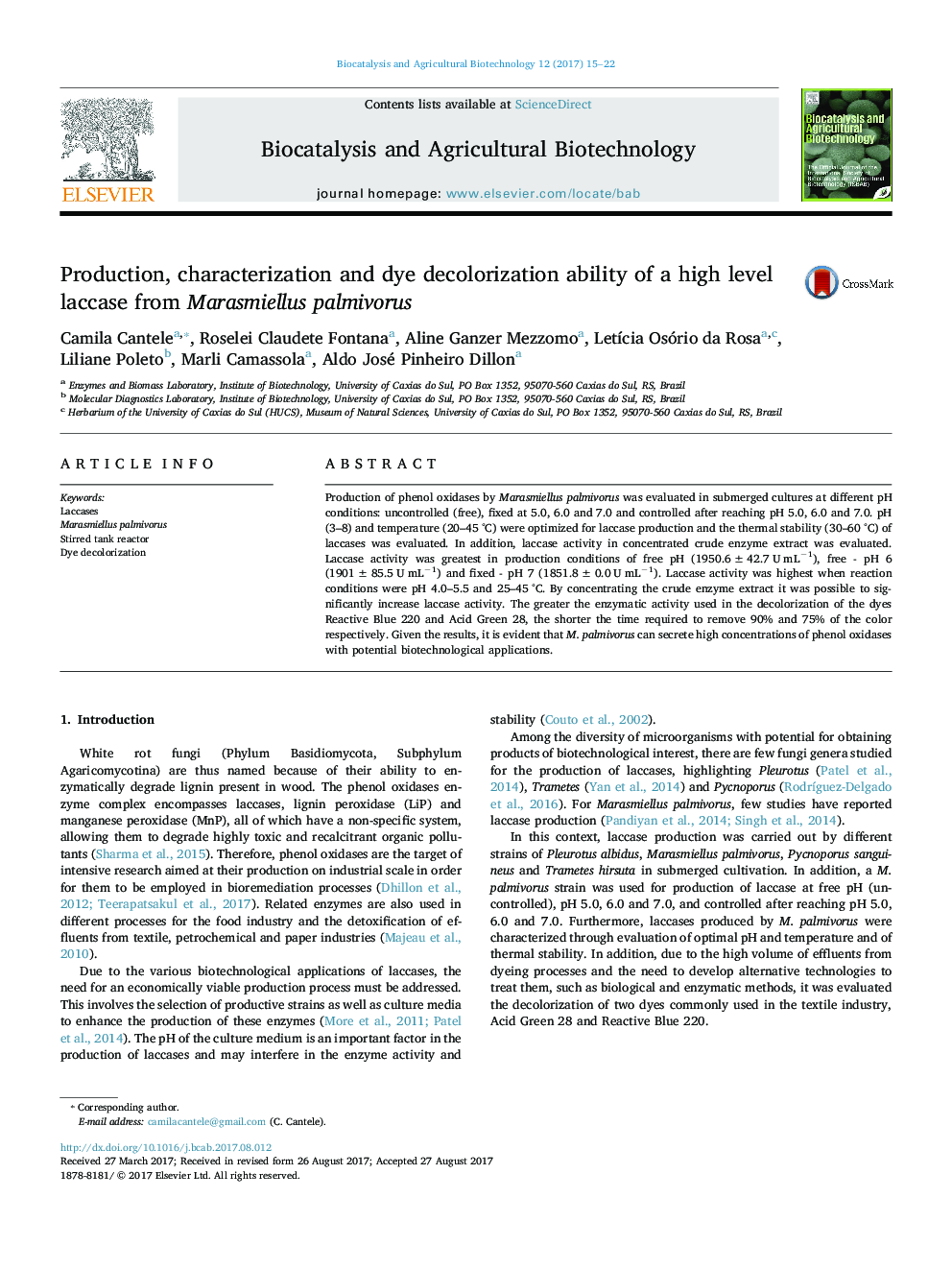| Article ID | Journal | Published Year | Pages | File Type |
|---|---|---|---|---|
| 5520421 | Biocatalysis and Agricultural Biotechnology | 2017 | 8 Pages |
â¢M. palmivorus secretes high concentrations of enzymes of biotechnological interest.â¢The optimum pH for growth is different from that of enzyme production.â¢pH 7 conditions were optimal for laccase thermal stability.â¢Laccase activity was maintained with control of the production pH.â¢Laccase activity and production were influenced by pH.
Production of phenol oxidases by Marasmiellus palmivorus was evaluated in submerged cultures at different pH conditions: uncontrolled (free), fixed at 5.0, 6.0 and 7.0 and controlled after reaching pH 5.0, 6.0 and 7.0. pH (3-8) and temperature (20-45 °C) were optimized for laccase production and the thermal stability (30-60 °C) of laccases was evaluated. In addition, laccase activity in concentrated crude enzyme extract was evaluated. Laccase activity was greatest in production conditions of free pH (1950.6 ± 42.7 U mLâ1), free - pH 6 (1901 ± 85.5 U mLâ1) and fixed - pH 7 (1851.8 ± 0.0 U mLâ1). Laccase activity was highest when reaction conditions were pH 4.0-5.5 and 25-45 °C. By concentrating the crude enzyme extract it was possible to significantly increase laccase activity. The greater the enzymatic activity used in the decolorization of the dyes Reactive Blue 220 and Acid Green 28, the shorter the time required to remove 90% and 75% of the color respectively. Given the results, it is evident that M. palmivorus can secrete high concentrations of phenol oxidases with potential biotechnological applications.
Graphical abstractDownload high-res image (148KB)Download full-size image
